Dangerous holiday foods aren’t the only cause for pet owner concern this holiday season—many traditional decorations are also hazardous. If the fir (tree) has been flying at your home, it’s time for a decoration intervention. Use this guide from Livingston Veterinary Hospital to identify common but unexpected dangers in your holiday home and take extra precautions this winter season.
Christmas trees and pets
Oh, Christmas tree, how steadfast are your branches—until pets are involved! Many dogs and cats can’t resist the sudden appearance of a live or artificial tree in their living space. Unfortunately, playing with or chewing on a Christmas tree can have painful or toxic results. Tree hazards include:
- Tree oils and sap — These are mildly toxic and irritating to pets. Licking or swallowing can cause drooling or vomiting.
- Tree needles — Real and artificial tree needles are indigestible and can result in toxicity when consumed in high quantities, as well as puncture wounds or intestinal obstructions.
- Tree water — Live tree water can harbor bacteria, pesticides, or fertilizers. Cover your tree base to deter curious pets, avoid using water additives (e.g., sugar, aspirin, or plant food), and refill your tree water daily to prevent stagnation and bacterial overgrowth.
- Stability — Playful pets can topple an unsecured tree easily. Prevent your tree from going “timber” by supervising pets at all times, placing the tree in an adjustable weighted tree base, and, for ultimate security, using wire or fishing line to tie the top of the tree to an eye hook in the ceiling.
Lights, ornaments, pets!
What’s on the tree may be more tempting than the tree itself. Dogs and cats are enchanted by the twinkling, sparkling, and colorful shapes, which they commonly mistake for toys. When deciding how to spruce up your spruce, carefully consider the use of specific components, including:
- Tree lights — Cats are especially attracted to these flashing or twinkling temptations. However, these lights are often poorly insulated and can deliver a dangerous electrical shock when chewed. Broken bulbs can lead to cuts in or around the mouth.
- Breakable ornaments — Fragile and glass ornaments should be placed on high branches or left off the tree entirely. Broken pieces and glass shards can cut pets’ paws and mouths or result in choking or intestinal blockage if swallowed.
- Tinsel and garland — Cats who consume these decorations can suffer from a dangerous condition known as linear foreign body in which the intestine folds around the object like an accordion—requiring lifesaving surgical removal.
- Extension cords — Hide all cords to prevent tripping and electrocution.
- Gifts under the tree — Don’t place gifts under your tree until everyone is gathered to open them. Unattended gifts may be opened by unintended recipients, and the contents may contain harmful or toxic products. Ribbons and bows can tie up your cat’s intestines, so remove them immediately after gifts are opened.
Tabletop decor and pets
Tiny villages, model trains, nativity sets, and menorah remind us of holidays past and set the scene for making new memories. Ensure this year’s memories are positive and pet-safe by creating a danger-free display.
- Candles — Wagging tails and curious paws can turn a flickering flame into a full-on fire. Keep lit candles out of reach or replace them with battery-operated votives.
- Figurines — Tiny figures are easy to snatch from tabletops. These familiar characters often reappear on X-rays at Livingston Veterinary Hospital and may need surgical removal.
- Fake snow — Aerosol spray snow may trigger respiratory illness in cats and birds. Instant snow products typically are made from polymer or absorbent resin and are generally non-toxic but may cause gastrointestinal upset.
- Potpourri and essential oils — Liquid potpourri and some essential oils are poisonous to cats and birds, causing respiratory distress, liver failure, and burns.
- Food and candy — Many traditional holiday dishes are made from ingredients that are harmful to pets, including onions, chives, chocolate, nuts, and high amounts of sugar, salt, and fat. Keep party trays and candy dishes off low tables and ensure your guests don’t leave alcoholic drinks unattended.
Toxic plants and pets
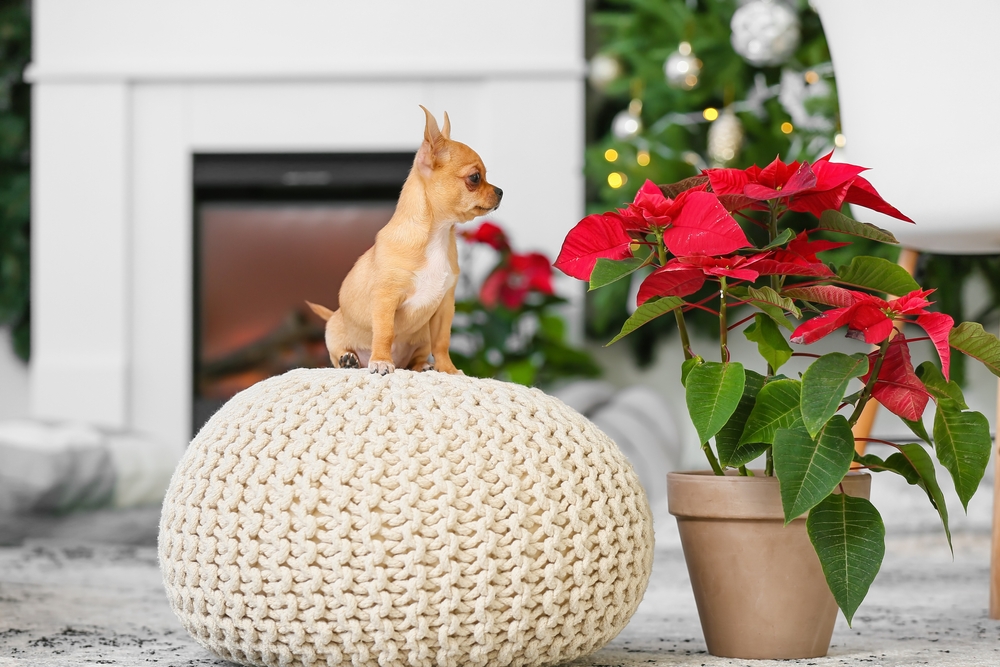
Decking the halls with boughs of holly and pine can magically transport you to the heart of the holidays, but if your pet consumes a toxic plant, you’ll be transporting them straight to Livingston Veterinary Hospital. Such poisonous plants include:
- Holly and mistletoe — The berries and leaves are highly toxic. Ingestion can cause nausea, vomiting, low blood pressure, abdominal pain, and respiratory distress. Large amounts can lead to seizures and death.
- Amaryllis — Consuming this plant’s flower, stalk, or bulb results in severe gastrointestinal signs, lethargy, and tremors.
- Lilies and daffodils — These plants are extremely toxic to cats, and only a little is necessary to cause kidney failure.
Contrary to popular belief, poinsettias are not deadly to pets, although consuming the leaves will result in oral and esophageal irritation, nausea, and vomiting.
The team at Livingston Veterinary Hospital wants to ensure the only vision dancing in your head this holiday is sugarplums, not veterinary bills or sick pets. With a few extra precautions as you deck the halls and hang your stockings, you can have a safe and healthy holiday with your pet. However, we know things happen and we’re here if you need us. If you know or suspect your pet has ingested something toxic or harmful, immediately contact us or call the ASPCA Pet Poison Control.
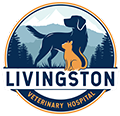

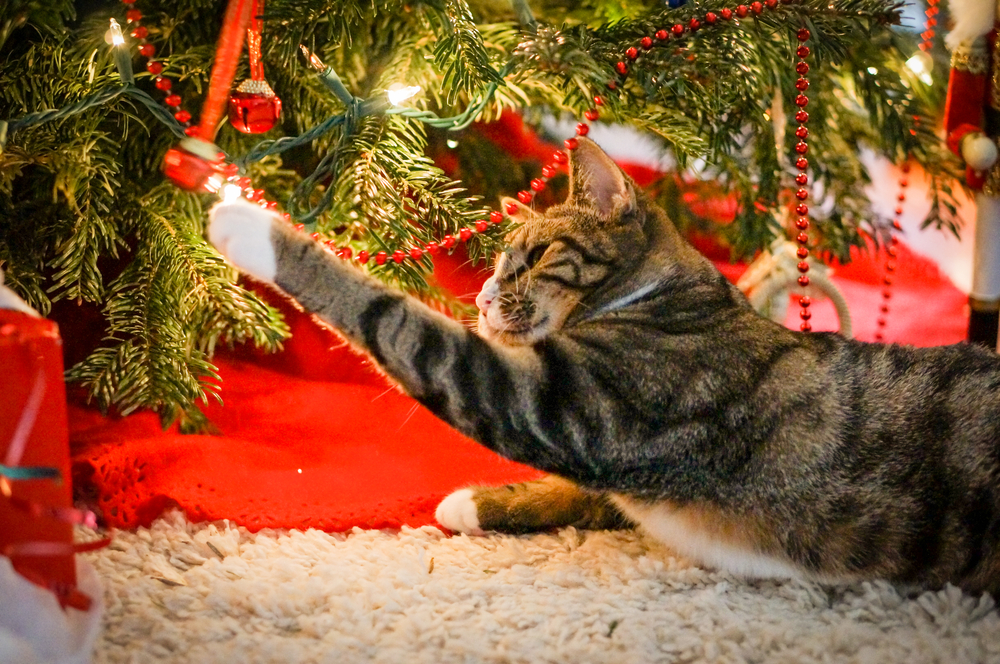


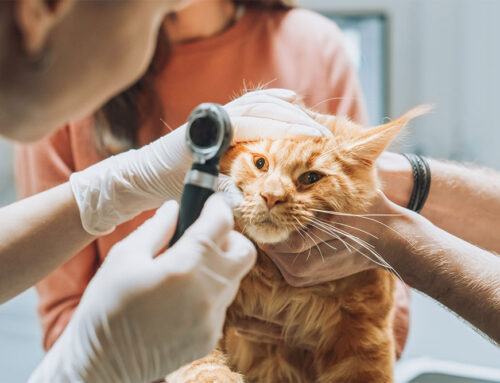
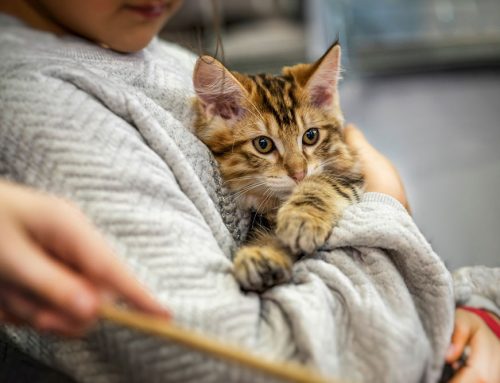
Leave A Comment